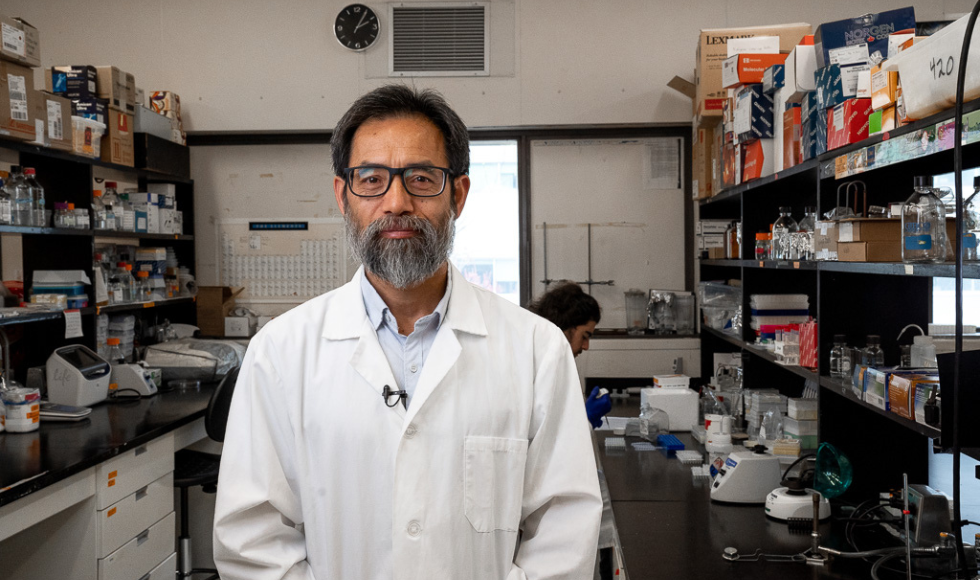McMaster research offers new insights into drug-resistant fungus Candida auris

Professor Jianping Xu's work to create a statistically validated list of genes and mutations linked to drug resistance in Candida auris shows that the pathogenic fungus has an unexpectedly broad diversity of drug resistance mechanisms and can evolve to resist medications.
BY Blake Dillon
January 25, 2024
McMaster researchers have developed a statistically validated list of genes and mutations linked to drug resistance in the pathogenic fungus Candida auris, which could affect the diagnosis and treatment of infections, as well as the development of more effective medications.
Jianping Xu, a professor of biology and the senior investigator on the study, says the new information addresses a significant gap in C. auris literature.
“Since 2009, when C. auris was first identified, over 4,000 strains of this pathogen have been sequenced,” he says. “Of these, less than 10 per cent had publicly available drug-related data, and those that did, mostly connected mechanisms of drug resistance to a list of mutations in a few select genes, without statistical context.”
Alongside PhD student Yue Wang, Xu sought to correct this.
The duo scanned all previously reported C. auris isolates to validate — statistically — which genes and mutations in the whole genome were truly associated with the organism’s response to a series of commonly prescribed antifungal drugs.
While the study validated some previous reports and corrected others, the biggest surprise for researchers was that most of the relevant genes and mutations that they identified were entirely novel, meaning they had never before been associated with drug resistance in human fungal pathogens.
“This shows that C. auris has a broader diversity of drug resistance mechanisms than previously thought and that it can evolve to resist medications at a fast rate,” says Xu, a member of the Michael G. DeGroote Institute for Infectious Disease Research at McMaster. “It also shows that there is still much to learn about this pathogen.”
Xu says the findings, published recently in the Journal of Fungi, have major implications for how C. auris infections are diagnosed and treated, and could also impact the development of new, more effective medications in the future.
“With a better understanding of the specific mutations that are associated with drug resistance in this organism, clinicians can more rapidly identify drug susceptibilities to guide treatments and researchers can work toward developing new drugs that target these particular genes.”
More Fungi, More Resistance
Xu’s research comes on the heels of another similar study, through which his team — with colleagues from Qatar, Singapore, and B.C. — explored drug resistance in Candida glabrata, another human fungal pathogen.
Like C. auris, C. glabrata was shown to have several known and novel genes as associated with antifungal resistance.
While this study focused specifically on isolates taken from hospitals in Qatar, the researchers found that the local population of C. glabrata was strikingly similar to populations from other parts of the world.
“This tells us that there is frequent transmission of this pathogen globally,” Xu says.
These findings were recently published in the journal Microbial Genomics.


